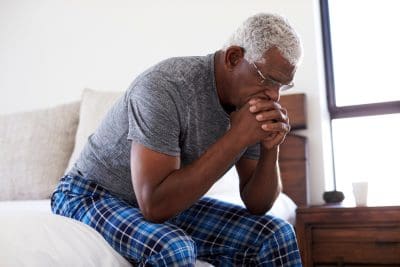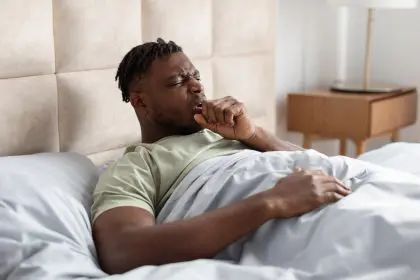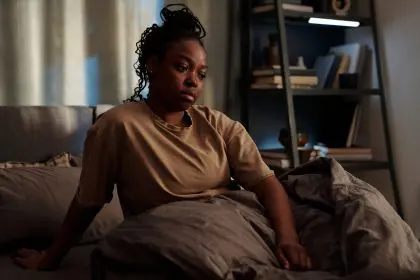Every passing minute during a stroke destroys approximately 2 million brain cells. Despite this staggering fact, thousands of individuals delay seeking medical attention when experiencing stroke symptoms. This critical delay often results in severe disabilities or death that could have been prevented with immediate action. Recent data from major medical centers reveals that only one in three stroke patients arrives at the hospital within the crucial three-hour window when treatments prove most effective.
Why our brains fight survival instincts
The human brain, designed for survival, paradoxically often works against us during stroke emergencies. When faced with alarming symptoms, many people enter a state of cognitive dissonance, where their mind actively works to create alternative explanations for what’s happening. This psychological phenomenon serves as a protective mechanism against anxiety but becomes dangerous when it prevents crucial medical intervention. Our natural tendency to minimize potential threats combined with the desire to maintain normal daily routines creates a perfect storm of delayed response.
The deadly spiral of symptom dismissal
Most people demonstrate a concerning pattern when experiencing stroke symptoms. The sequence typically begins with noticing unusual sensations or difficulties, followed by rapid rationalization. What starts as a sudden headache gets dismissed as just another stressful day at work. Arm weakness becomes nothing more than sleeping in an awkward position. Slurred speech gets attributed to fatigue or dehydration. This pattern of minimization creates a dangerous delay that significantly impacts survival and recovery rates. The mind’s powerful ability to normalize concerning symptoms often proves detrimental during medical emergencies.
The deceptive nature of stroke symptoms
Unlike the dramatic presentations seen in medical dramas, real stroke symptoms often manifest subtly. This subtlety creates a dangerous gap between perception and reality. When someone experiences slight speech slurring or minor coordination issues, they might attribute these changes to common daily occurrences rather than recognizing them as potential stroke indicators. The brain’s tendency to seek simple, non-threatening explanations often leads people to downplay these critical warning signs. Moreover, the temporary nature of some early stroke symptoms reinforces this dismissive behavior, as people tend to feel relieved when symptoms temporarily subside, not realizing this relief might be short-lived.
Cultural barriers and their impact
Different cultural backgrounds significantly influence how people interpret and respond to stroke symptoms. In many communities, seeking immediate medical help carries social stigma, viewed as an overreaction or sign of weakness. Traditional communities often emphasize self-reliance and resilience, leading individuals to attempt self-treatment or wait out symptoms rather than seeking professional care. Immigrant populations face additional challenges beyond cultural beliefs, including language barriers and unfamiliarity with local healthcare systems. Historical distrust of medical institutions in certain communities creates another layer of hesitation, while strong beliefs in alternative medicine may lead people to seek traditional remedies instead of emergency care.
The gender factor in stroke response
Research indicates striking differences in how men and women respond to stroke symptoms. Women, particularly those in caregiving roles, frequently prioritize family responsibilities over their health concerns. The tendency to maintain household stability and avoid disrupting family routines often leads to dangerous delays in seeking treatment. These delays stem from deep-seated social expectations and internalized pressure to put others’ needs first. Women often express concern about being perceived as overreacting or becoming a burden to their families, leading them to downplay or ignore serious symptoms until they become severe.
Age-related misconceptions
A dangerous myth persists that strokes primarily affect older adults, creating a deadly blind spot for younger individuals who might dismiss warning signs. Recent studies show an alarming increase in stroke occurrence among adults aged 25-45. This trend correlates with modern lifestyle factors including elevated stress levels, poor dietary habits, and increasingly sedentary behaviors. Young adults often dismiss early warning signs, believing their age provides immunity from such serious health events. This misconception becomes particularly dangerous when combined with the increasing prevalence of uncontrolled high blood pressure and other risk factors in younger populations.
The socioeconomic barrier
Economic factors play a crucial role in stroke response delays. The fear of overwhelming medical bills often outweighs immediate health concerns, particularly in areas with limited insurance coverage. Transportation challenges in rural or underserved areas compound this problem, making quick access to emergency care difficult or impossible. Work-related pressures add another layer of complexity, as many individuals worry about job security or lost wages when considering emergency medical care. These financial stressors create a dangerous hesitation during critical moments when immediate action could prevent permanent disability or death.











